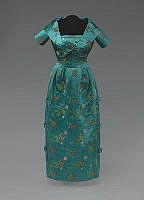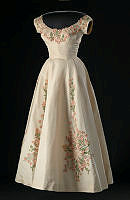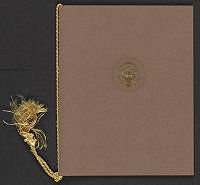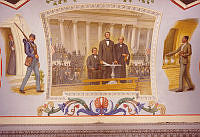Rubenstein Center Scholarship
Paul Jennings
Slave, Freedman, and White House Memoirist
This article is part of the Slavery in the President’s Neighborhood initiative. Explore the Timeline

A mid-nineteenth-century photograph of Paul Jennings by the E.C. Perry Photograph Company.
The Estate of Sylvia Jennings AlexanderPaul Jennings was born in 1799 at Montpelier, the Virginia estate of James and Dolley Madison. His mother, an enslaved woman of African and Native American descent, told him that his father was the local English trader Benjamin Jennings. While Paul had no documented relationship with Benjamin and probably never met him, he did adopt the ‘Jennings’ surname as his own. As a young enslaved servant of the Madison family Paul performed domestic duties and often attended Dolley’s son John Payne Todd. Trained first as a footman Paul later became James Madison’s valet, assisting Madison with his clothing, appearance, and every day undertakings. In this capacity Paul became a vital member of the household, so much so that when Madison won the election in 1808 the family brought him to the President’s House. Paul continued to work as President Madison’s valet but often fell under Dolley Madison’s authority as a dining room servant. These two figures, along with several others, were responsible for saving a number of significant White House artifacts from destruction during the War of 1812.1 Click here to learn more about the enslaved households of President James Madison.

This portrait of James Madison was painted by American artist John Vanderlyn in 1816, towards the end of Madison's presidency. He was president from March 4, 1809 until March 4, 1817.
White House Historical Association (White House Collection)On August 24, 1814 British forces led by Major General Robert Ross defeated the Americans at the Battle of Bladensburg in Maryland. As the British began their march to Washington D.C., work at the President’s House continued as planned. Dolley ordered “dinner to be ready at 3” as the Madisons intended to host the cabinet along with “several military gentlemen and strangers.” At around 3 o’clock a free black man named James Smith rode up to the house shouting, “Clear out, clear out! General [John] Armstrong has ordered a retreat!” Chaos ensued as the residents of the house hurried to vacate its premises. Amidst the confusion a “rabble” of people entered the mansion and “stole lots of silver and whatever they could lay their hands on.”2 Afterwards newspapers circulated a report that Dolley Madison had personally saved Gilbert Stuart’s portrait of George Washington, a story that revived patriotism and support for the war. The tale, lauding the First Lady’s quick thinking in a moment of crisis, eventually found its way into American folklore through schoolbooks, monographs, and artwork. She repeated the story frequently for the rest of her life, reminding listeners of her bravery and love of country.3

This full-length portrait of George Washington was painted by Gilbert Stuart in 1797, the final year of his presidency. The portrait was installed in the President's House in November 1800 and removed during the War of 1812. It returned to the White House after its reconstruction in 1817.
White House Collection/White House Historical AssociationAfter the Madisons left the presidency Jennings returned with them to Montpelier, resuming his role as manservant to James Madison. He served the former president until Madison’s death in 1836. James bequeathed enslaved individuals under his ownership to his wife Dolley to protect her from debt but he explicitly asked that none of them be sold without consent, especially when it involved children or families.4 The Panic of 1837 devastated the paper value of Dolley’s assets; this economic crisis, coupled with her son’s expensive gambling and drinking habits, devastated her inheritance. She eventually sold Montpelier and her husband’s political papers to the federal government for relief; when this income disappeared she disregarded her husband’s wish and sold slaves without their consent. Fortunately for Jennings and his wife Fanny their five enslaved children—Felix, William, Frances, John, and Franklin—were not Dolley’s to sell, as they resided with their mother on a neighboring plantation.5
While they avoided legal separation, things were not easy for the Jennings family as Dolley ordered Paul to return to Washington with her. Hard-pressed for money she hired out Paul’s services to her friends on Lafayette Square, President James K. Polk and First Lady Sarah Polk. Eventually this arrangement also failed to cover her expenses, and in September 1846 she sold Paul to a local insurance agent named Pollard Webb. Webb owned Jennings for about six months before Massachusetts Senator and former Secretary of State Daniel Webster offered to purchase Paul’s freedom in March 1847. In their agreement Webster wrote: “I have paid $120 for the Freedom of Paul Jennings—He agrees to work out the sum, at 8 dollars a month.”6 Webster honored their contract and later recommended Jennings, an “honest, faithful, and sober” home servant, for a position at the Pension Office in the Department of the Interior.7 Click here to learn more about the enslaved households of President James K. Polk.

The Working Agreement between Daniel Webster and Paul Jennings, March 19, 1847.
Moorland-Spingarn Research Center, Howard UniversityWith Webster’s endorsement the Pension Office hired Paul as a laborer and messenger. Several years later he purchased property on L Street near Eighteenth Street, on the northwest side of the city. Over the next decade he reunited with his freed children; his son John resided with him for some time and his daughter Frances lived next door with her two sons.8 During Paul’s time at the Department of the Interior he met a man named John Brooks Russell, a history enthusiast and writer. Fascinated by Paul’s life and his intimate associations with famous figures Russell transcribed the stories for publication “in almost [Paul’s] own language.”9 In 1865 Jennings’s A Colored Man’s Reminiscences of James Madison first appeared in book form. Though contemporaries often overlooked its importance because of Jennings’s formerly enslaved status, historians today consider it the first White House memoir. Jennings spoke gently of his former owners but he did not mince words regarding Dolley Madison’s famous act of historic preservation: “It has often been stated in print, that when Mrs. Madison escaped from the White House, she cut out from the frame the large portrait of Washington…and carried it off. This is totally false.”10 According to Jennings’s account the First Lady gathered some items, stashed silver in her handbag, and quickly escaped with her enslaved lady's maid Sukey and Charles Carroll.11 While Dolley ordered the removal of the painting, the president’s steward Jean-Pierre Sioussat and gardener Thomas McGraw actually took it down and “sent it off on a wagon” out of harm’s way.

This portrait of Dolley Payne Madison was painted by renowned artist Gilbert Stuart in 1804. It officially became part of the White House collection in 1994.
White House Collection/White House Historical AssociationAs the nineteenth century progressed a number of individuals attempted to claim a share of Dolley’s glory. For the rest of her life she insisted that she had ordered those present to break the frame and take it off the wall; and that once it came down she gave the portrait to two men, Jacob Barker and Robert G.L. De Peyster, who stopped to offer assistance. She resented Daniel Carroll’s assertion that his father Charles, who helped Dolley escape, saved the portrait in any way. Jacob Barker also wrote his own version some thirty years later, acknowledging Dolley’s request that the painting be saved but suggesting that she left before its removal. Barker remembered himself, his servant, De Peyster, and “the hired black boy” hoisting the artwork. Another rumor credited General John Mason, who was with President Madison during the British invasion, as the painting’s true savior. While we may never know what exactly transpired that August night it seems that a collective effort, instigated by Dolley Madison, ensured that Stuart’s masterpiece would not only survive the war but also transcend time as an icon of national pride. Today it resides in the East Room of the White House, paired with the full-length portrait of First Lady Martha Washington.12
Paul’s struggle to escape slavery eventually led to his freedom and support of abolitionism. While working for Daniel Webster in the nation’s capital, Paul helped organize a slave escape in April 1848. Labeled the “Pearl Incident,” Seventy-seven enslaved people sailed down the Potomac River but were captured at Point Lookout in Maryland. Jennings, who felt that he owed Webster a debt of gratitude for securing his independence, decided to fulfill their agreement instead of joining the exodus. His views on slavery and emancipation also influenced his sons John, Franklin, and William, all of whom enlisted to fight for the Union during the American Civil War. When Paul Jennings passed away in May 1874 he bequeathed a modest house and valuable property to his children in northwest Washington. His story illuminates how enslaved African Americans were vital to the operation and function of the President’s House. While most slaves never left a written record of their lives, Jennings’s account aptly demonstrates that people of different races, ethnicities, and cultures shaped American history and how we remember it today.13










